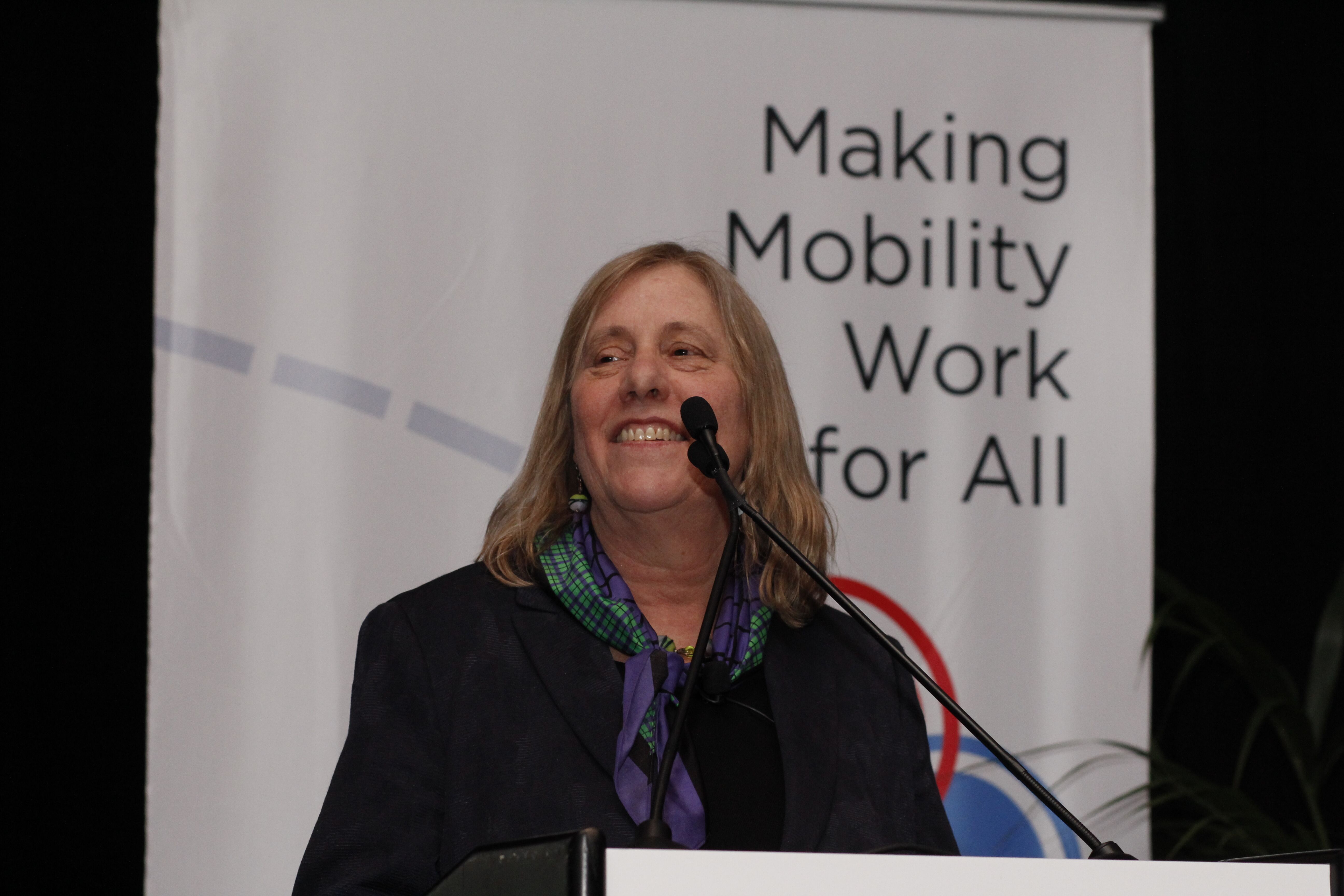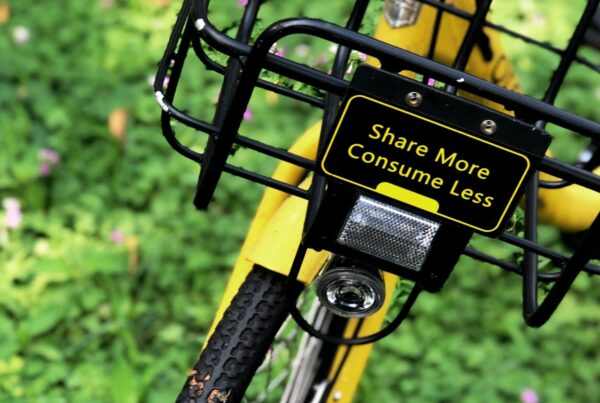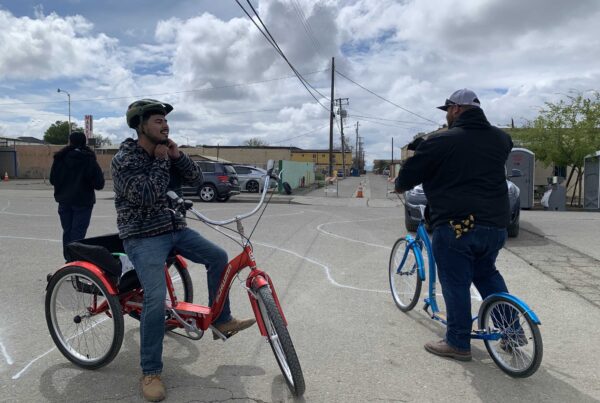Sharon Feigon welcomes the crowd to the 2019 National Shared Mobility Summit.
On March 5, 6, and 7, SUMC brought together more than 700 mobility practitioners from 40 States and 14 countries—including policymakers, public and private sector leaders, agency heads, startups, and researchers—for the 2019 National Shared Mobility Summit. It is the only conference of its kind that focuses not just on sharing the latest developments in shared mobility, but on asking tough questions, digging for real answers and collaborating on breakthrough solutions.
We’re thankful to everyone who took part in meaningful conversations at this year’s Summit and helped bring us closer to Shared Mobility for all. Without further ado, here are Sharon’s Top Ten Takeaways:
1. Electric vehicles alone will not solve climate change.
We need clean shared vehicles. It’s simple math. Even if 90% of all cars were electric by 2040, the reduction in CO2 emissions would be insufficient to impact global warming. We need fewer cars on the road and more shared, sustainable mobility options.
2. Transportation is not going to pay for itself through user fees, ever.
We need to support it. Transit can be viewed as a public service, like water or gas. While each citizen pays a percentage, there is wider support to keep it efficient and affordable.
3. Equity considerations need to be thought through from the start on all new modes including automated vehicles and stakeholders need to be included in program design.
Access to new mobility options should not be limited to certain income levels or geographic areas.
4. We need to breakdown the silos between public agencies and the private sector to more successfully manage mobility.
Working together seamlessly is crucial when creating a multi-modal transportation system that works for all. Data sharing is key.
5. Focus on moving people, not vehicles. Enough said.
6. We need leaders who can change minds and inspire action across the board:
Former Secretary of Transportation Anthony Foxx, Mass DOT CEO Stephanie Pollack, LA Metro Chief Innovation Officer Joshua Schank, and KCATA VP Jameson Auten to name just a few of our amazing plenary speakers and panelists.
7. Vancouver has shown that it’s possible to turn a car-oriented culture into a transit center.
How did it achieve this? By offering transportation alternatives, and focusing on density by building complete communities.
8. Sometimes it’s necessary to see a new concept in action to get buy-in — tactical urbanism can work.
If you don’t get full support for a new bike line, as one speaker said, don’t be afraid to test it with orange cones first. Seeing the benefits is believing.
9. Policy from the top-down mandates action, but it takes a community to initiate policy.
From shared mobility programs in Europe to those in Vancouver and Washington State, government policies that support shared mobility were crucial to final program development.
10. We need to rethink the way our cities, regions, and streets are designed.
It’s all about land use. Real transit-oriented development enables shared mobility, and streets themselves can encourage safe use of mobility options or pose a barrier. It starts at the ground level.
The shared mobility conversation has not stopped. SUMC is committed to sharing learning and collaborating throughout the year. Watch for workshops, webinars, new pilots, and groundbreaking research ─ and make sure to visit the new MOD Learning Center featuring self-guided learning modules, case studies, metro profiles, and more. Visit Learn.SharedUseMobilityCenter.org to get started.



